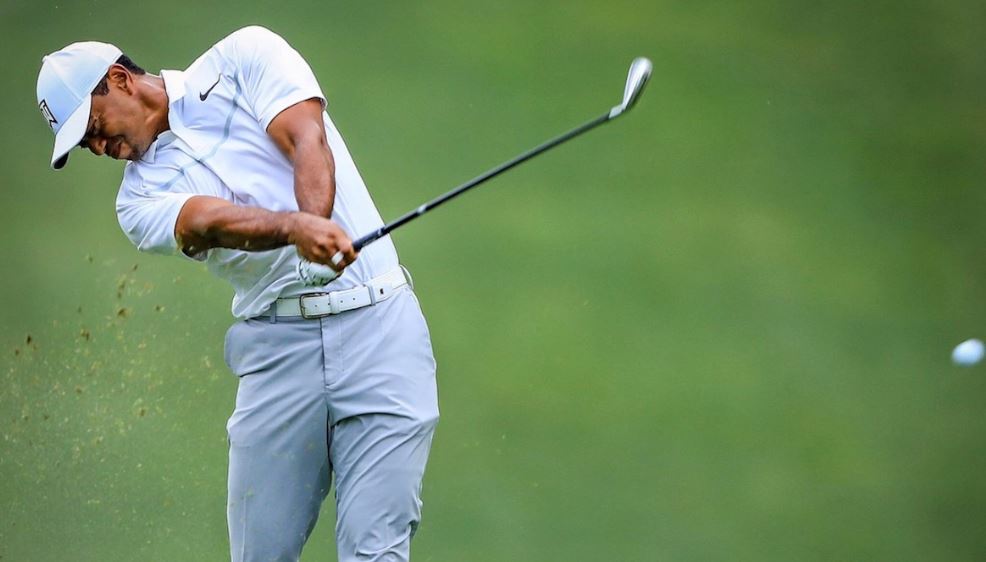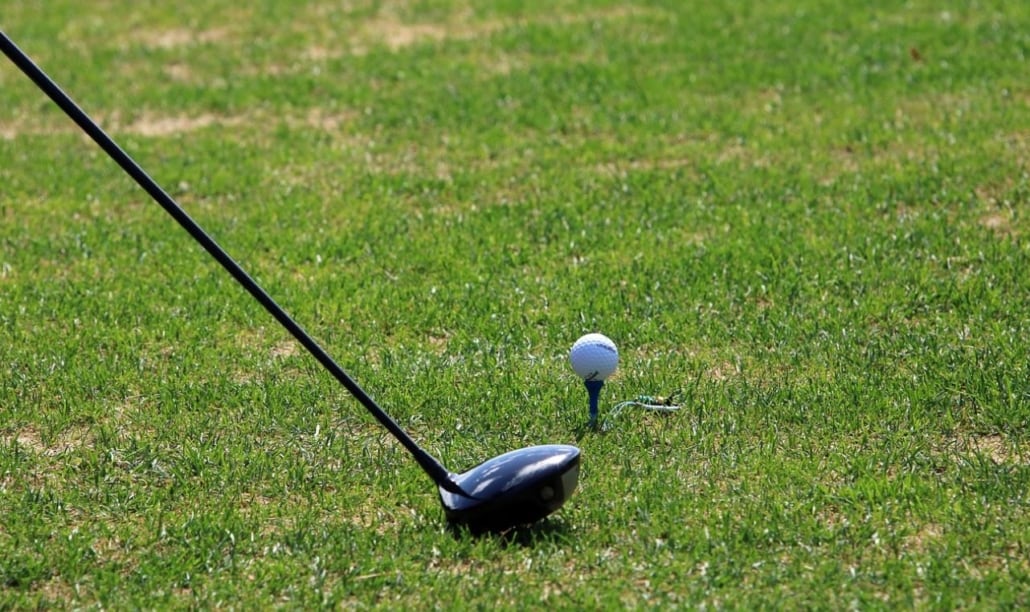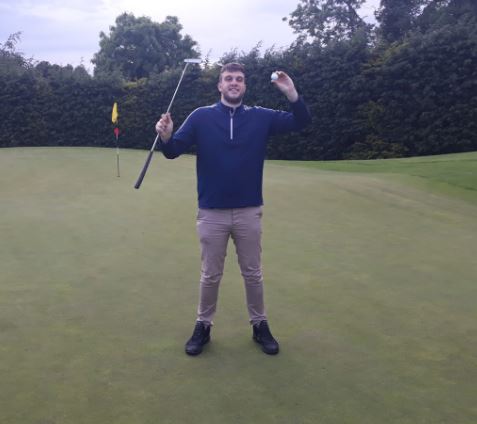Should Golfers De-Loft Their Irons & Other Clubs – Benefits, Guide & FAQ

The golf swing is a peculiar action and many of the things that you think happen, don’t actually happen. One of the main things that may surprise you is that the loft on your club is not the loft of the club at impact, if you’re hitting the ball properly.
This may sound cryptic and confusing but stay with this article and I’ll explain what I mean. Today we are discussing de-lofting and its importance at impact. How can you get the most from your clubs with just a small change through the ball.
What does de-lofting mean?
If you’ve ever watched a slow-motion replay of any of the best golfers in the world, you’ll notice that they deliver the club at impact with their hands way ahead of the ball. This has the effect of taking loft off of the club. This shaft-lean, as it is often called, creates what is known as dynamic loft.
This is a term that we golf geeks love to band about but it really is important to the resulting golf shot. If you don’t de-loft your club face then you will put the ball up in the air with a weak flight or even thin it, if you overly de-loft it then you will struggle to get the ball of the ground.
Why would you do this? What are the benefits of de-lofting your club?
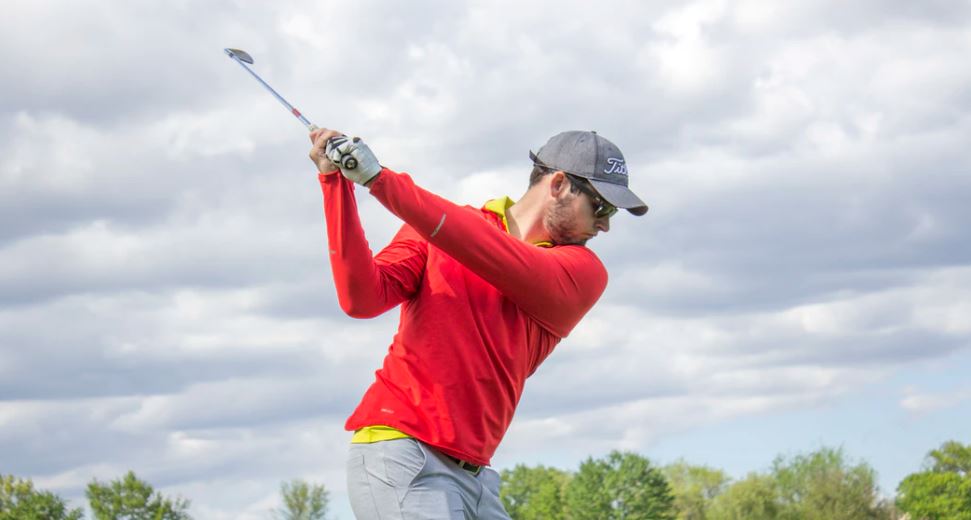
The main benefit of de-lofting your club at impact is that you create optimal launch conditions for the ball. That is a fancy way of saying that you send the ball off in the most efficient way in terms of the spin you impart on the ball and the take-off angle that it takes. Both of these factors combine to effect the distance of the resulting shot.
By getting this right you will gain much more control of the ball and you will see the proof of this in how it flies through the air. On windy days, players who don’t de-loft efficiently will struggle with weak high-spin shots that can’t penetrate the breeze.
Who should de-loft their clubs?
Everyone, with every club in the bag except the driver and the putter. De-lofting is also often known as compressing the ball and it really helps the ball act as it is designed to. By compressing the ball properly at impact, you actually help it get into the air by letting the grooves in your irons work their magic and launch the ball.
The driver should actually be hit in a way that increases the loft of the club through the ball, you should ‘hit up’ on the ball through impact. This is for another reason and could be a whole other article so just remember that de-lofting is for the irons and the wedges.
How can I de-loft my clubs?

This is something you should work on with a qualified coach. This is a move that you actually want to feel with your body more than with your hands. You will ‘cover’ the ball with your body which will create lag with the club face, essentially, the body will lead the club to impact.
By having your body ‘roll’ through the ball first with your hands leading, the club face will be de-lofted. This is a move you should practice and, like I say, have a pro help you get there. When you get this move right, you will hear the ball fizz through the air.
Do pro golfers de-loft their clubs?
Have you ever watched a top pro hitting balls? You hear the ball fizzing through the air like a distant jet fighter, it is incredible. This sound comes from the de-lofting and compressing the ball at impact. That sound is the ball spinning at high speed as it rips through the sky.
This is how these guys and girls hit such strong-flying shots that can scythe through any wind. By de-lofting they launch the ball so perfectly that it flies true. There is some magic in that very brief moment when they hit the ball, much of it comes from how well-they de-loft the club at impact.
What clubs should I be working on this with?
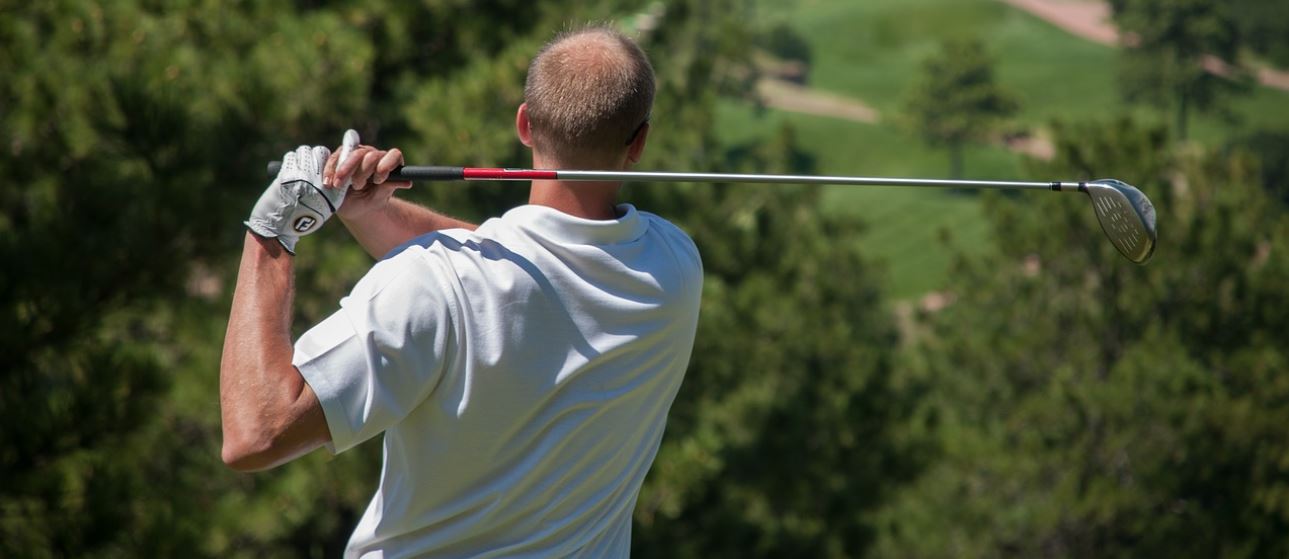
The irons
Well the mid-irons are the perfect place to start. These are forgiving clubs so you can work on this new action and learn it in relative safety. You will notice the strike feels much more energetic and the ball flies totally different when you get it right.
Given that your mid-irons have a fair amount of loft, they tend to fly high quickly. By reducing this loft at impact, that initial flight will be lower and the ball will appear to climb rather than being launched high. It is hard to imagine but you will know it when you see it.
The driver
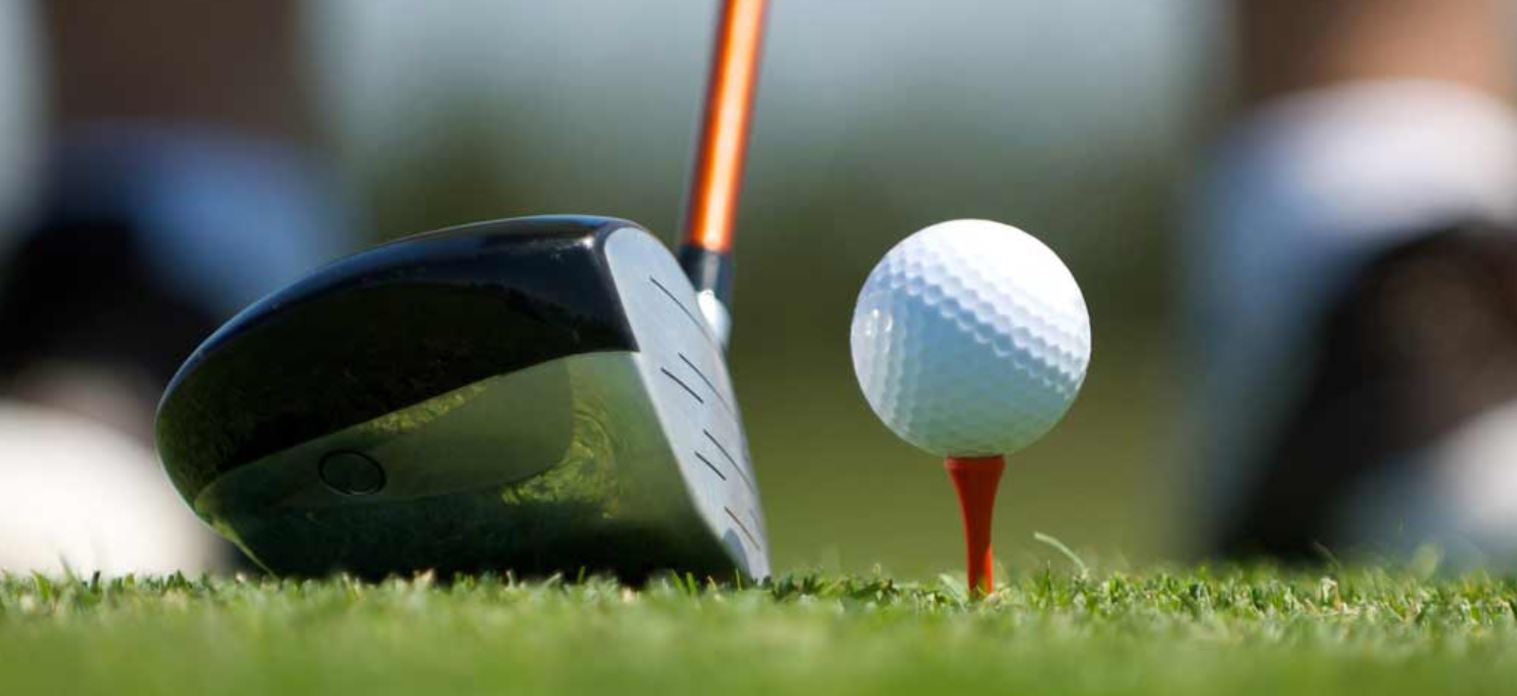
I’ve discussed this briefly already but modern drivers are actually designed for you to hit up on the ball. Think of lifting the ball into the air to launch it rather than compressing it down and spinning it. Hitting up on the ball has the great effect of reducing the spin you impart on the ball and helping it fly significantly further.
Modern balls are made to spin, however too much spin kills distance with a driver. By modifying your set-up slightly with the big dog you can lift the ball into launch and get it flying further than ever before. Top pros hit their drivers really high and you should too.
Fairway woods – from the grass
There is a lot of debate among the best coaches in golf about how to properly set-up for a fairway wood shot. One thing that they do agree on is the nature of the strike and yes, you should be hitting down on the ball and de-lofting the club in the process.
You don’t want to take a big divot and you almost want to approach this shot as you would with a long iron. Nice and smooth with a shallow swing just nipping the ball off the turf. That downward action through the ball will help you de-loft and get a really nice sold contact.
Fairway woods – from the tee
Many find that hitting the driver can be treacherous and love the security and forgiveness of a fairway wood from the tee on tight holes. The temptation is to swing the fairway wood hard and hit it just like a driver, but don’t.
You need to tee it low and play it just like you would with a shot from the turf. If you de-loft properly with your fairway wood from the tee, you’ll get a really nice low penetrating ball flight with minimal side-spin. You’ll hit that three wood like Henrik Stenson.
Wedges

You’re close to the green and you’re taking dead aim, but do you de-loft wedges? Yes, you do, this is when you’ll see huge benefits to compressing the ball and hitting it properly. The biggest benefit will be the spin control that you suddenly acquire.
De-lofting your wedges ensures the best contact you can get with the ball as it maximises the effect the grooves can have on the ball. You will rip through the ball and then the turf imparting some beautiful spin on the ball as it sails towards the flag. Just watch and enjoy the high-spin magic.
What are the disadvantages of de-lofting?
It is true, there can always be too much of a good thing and de-lofting can go too far. If you take too much loft off your club at impact you will struggle to get it off the ground, which makes sense. You may also start to hit shots really fat as you try to overdo the compression and hitting down on the ball.
The other problem you can run into is imparting too much spin on the ball. This can be a particular issue when you’re hitting full shots with wedges. You need to learn to control that spin so you don’t start ripping balls off the green as they hit reverse gear hard!
How can I stop de-lofting my clubs too much?
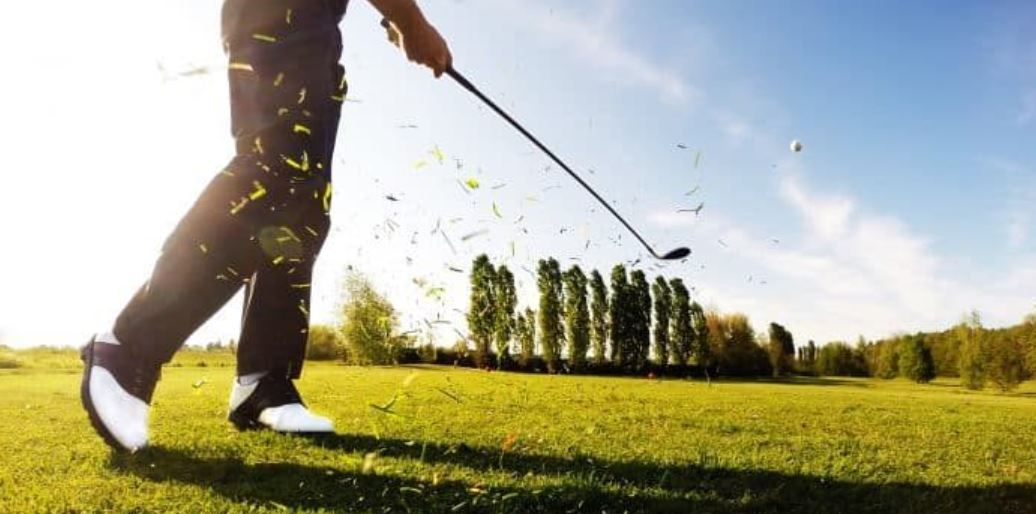
This is down to practice and repetition, you will learn how to feel what is right and what is wrong. This is something that you want to practice on grass as much as possible because the mats at the range will kill the feeling as they don’t let the club properly get under the turf. You will hit a lot of fat shots as you try to perfect this new move but stay with it, it’s worth it.
One of the drills you can do to help your irons is in this link from Me and My Golf. Just get yourself a good pro and put in the hours practicing, you will notice this revolutionizes your ball-striking and you will see the benefits.
How do you hit a ball higher with irons?
Height has become a real advantage in modern golf and it certainly brings the player more control as the ball runs out far less upon landing. To gain this extra height and the control it can bring, you need to start de-lofting at impact to get your grooves spinning the ball up in the air. A tour quality ball with a soft cover will respond best to this kind of strike.
By hitting the ball this way you will get a better strike too which will mean more ball speed at impact resulting in greater height too. Get your body over that ball as you swing through it and you can watch the beautiful flight for yourself. Here is a drill to help you with this specifically.
Why do I hit my irons so high?
There are many things that can contribute to you hitting the ball too high and this is something that you should talk to a pro about. A coach can help you identify the problem and give you some drills to fix this and improve your skills. This is something I highly recommend.
There could also be issues with the set-up of your club though. You may want to reduce the loft of your clubs, you may need a stiffer or heavier shaft or you could maybe need to change golf ball. Recently, I found out that the Titleist AVX was far better for my swing than the Titleist Pro V1 and the improvements were instantaneous.
De-lofting forged irons
If you like that buttery soft feel at impact then you will love forged irons, many of you will already know this. These clubs are made for feel and to give players as much feedback as possible. They are also more versatile in terms of how you can modify them and this gives you an added benefit.
If you have forged irons, you can have them physically de-lofted by strengthening the lie angle at address which should make it easier to achieve the optimum loft at impact. This is something that you absolutely must do with qualified people as you could easily mess this up and cause yourself a lot of problems. It is a useful exercise for all golfers to have their lofts checked anyway, you may be surprised at how variable they can be.
I’m really struggling to get distance with my irons, what’s going on?
Sometimes you may find that you struggle to get the distance you expect from your clubs, first thing to do is to ask yourself if you’re being realistic. Just because Rory, Brooks and some of the other big hitters can hit a six-iron 210 yards, that doesn’t mean you can get that close to that. Track your own yardages so that you know your own game.
If you are struggling to get distance, this can be addressed with a coach as it could be a swing inefficiency. You could be doing something that is killing your power and reducing your club head speed. You may also want to look at your spin rates as by de-lofting your clubs at impact you could unlock some speed.
Why do I hit my irons the same distance?
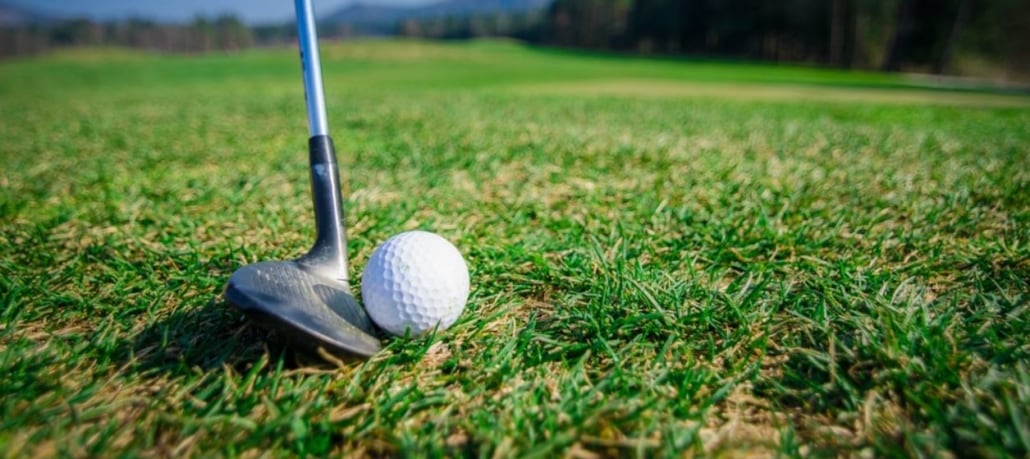
Every golfer should get onto a launch monitor and note his/her yardages with all clubs in the bag. This is key piece of research on your own game but it can lead to you seeing that some of your clubs go identical or very similar distances. This can be a problem and is something you should do something about.
Many of the largest golf club manufacturers are actually quite lax when it comes to quality control. You should measure the loft and lie of all of your irons and have them standardised, gapped, so that this is reflected in the distance you hit these clubs. This is a process that doesn’t take much work but will benefit you greatly.
De-lofting drills to take your game to the next level
The one-hand trick
The opposite of de-lofting is flipping and one of the best ways to combat this is to practice one-handed, warning, you will be terrible at this at first. Take a 3- or 4-iron in your left hand and address the ball with a shut face to take the loft off of it. Now hit the ball with a one-quarter swing and try to make the balls roll along the ground, if they fly then you’re doing it wrong.
The quarter swing standing start
This is a really tough one that I’ve used in the past and it is great at making you realize that you’re not being efficient through the ball. Take your club back, as normal, until it is parallel to the ground, it should be just above your knees. Stop completely.
From here, you are going to attempt to hit the ball as hard as you can and you are going to go into a full follow-through. The only way to properly strike the ball and get it going any distance is to drive through your lower-half and get your whole body working as it should to impact. Working on this abbreviated move will get you feeling the right action to take into your full swing.
The impact bag
You may have seen these being used by top players a while back, and they are great for helping you with this, they are called impact bags after all. By practicing with an impact bag, and you don’t need to hit them full-power, you will see what part of the club you present to the ball.
Many find that they present the leading edge of the club and realise why they often contact the ball a little thin. To use the bag properly, you need to de-loft your irons and you will hear the dull thud as you get it right.
Check Out The Best Impact Bag Here:
The best irons for distance
There are so many distance clubs on the market to choose from and by getting fitted with an expert you will find the clubs that suit your best. Here is a look at a few of the options out there just now tough. The distance you gain from some of these clubs will blow your mind.
PXG 0311P Gen 3
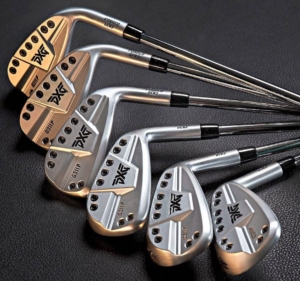
You’ve got to love when the marketing department comes up with a catchy name for a product. Well there is meaning to it, however, these clubs go miles! I tried the original PXG 0311 irons and I couldn’t believe just how far they launched the golf ball.
These clubs come with a premium price and if you can afford it they are definitely a great option. They are fitted with proprietary material inside the iron that creates huge energy return at impact which means distance! The fitting process that PXG put you through is among the best around and will give you an incredible set of weapons for your bag.
TaylorMade P790
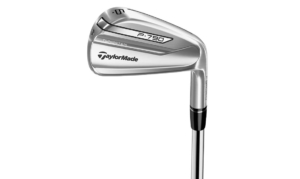
This offering from TaylorMade has been the subject of many court cases as they have a similar material embedded within the club to maximize ball speed. These irons are cheaper than PXG but still perform with mind-blowing distance. They are less customizable than the PXG set but are a great option for nonetheless.
These clubs also look fantastic and you can get them in black for those who want a bit more attitude about their irons. These clubs are also not cheap but they are a strong option for those looking to gain serious yards with their irons.
We Found The Best Price Here:
Titleist T200
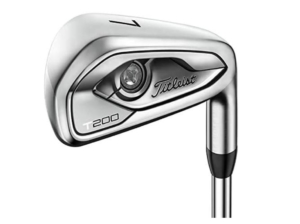
The brand new line of T Series irons have been a huge hit on the market and these are the ones for you if you are prioritising distance. They are stunning golf clubs that give more feedback than the two listed above. I would say that these ones are for better golfers that want some feel and playability as well as distance.
We Found The Best Price Here:
Mizuno MP-20 HMB
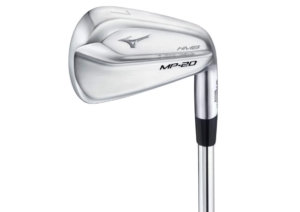
You can’t talk irons without talking about Mizuno. This is arguably the best iron-making brand in the world yet they have become a bit of an underdog. The MP-20 HMBs look like blades but play like distance irons and this is very impressive. Placing these clubs behind the ball will inspire confidence and the newfound yardage you see from them will increase this.
We Found The Best Price Here:
Conclusion
Distance certainly isn’t everything in golf but if you can improve your strike dramatically and gain distance in the process, it is a no-brainer. De-lofting your clubs is one of those movements that can truly take your game to the next level and is something you should work hard to improve. There are few things more satisfying in golf than hearing your ball fizz through the air as it travels towards the target.
By following some simple drills and spending time with a coach, you can quickly start to get that fizz in your balls. Watch some slow-motion swings from the best players in the world and try to emulate that impact position that they are able to create. This takes work and patience, but trust me, it is worth every second once you get it right!

